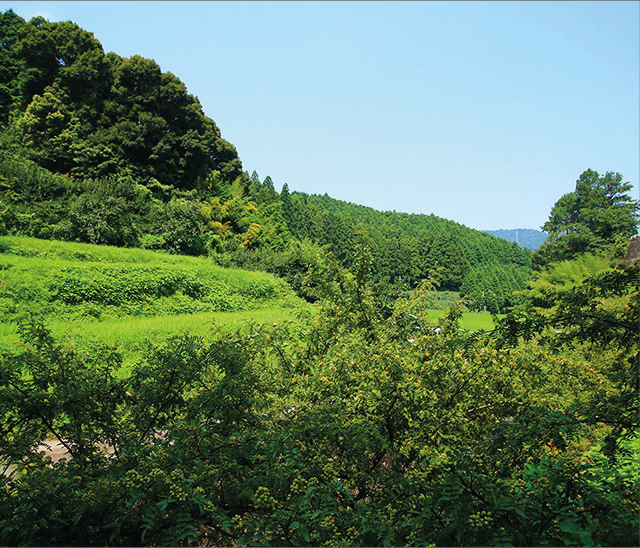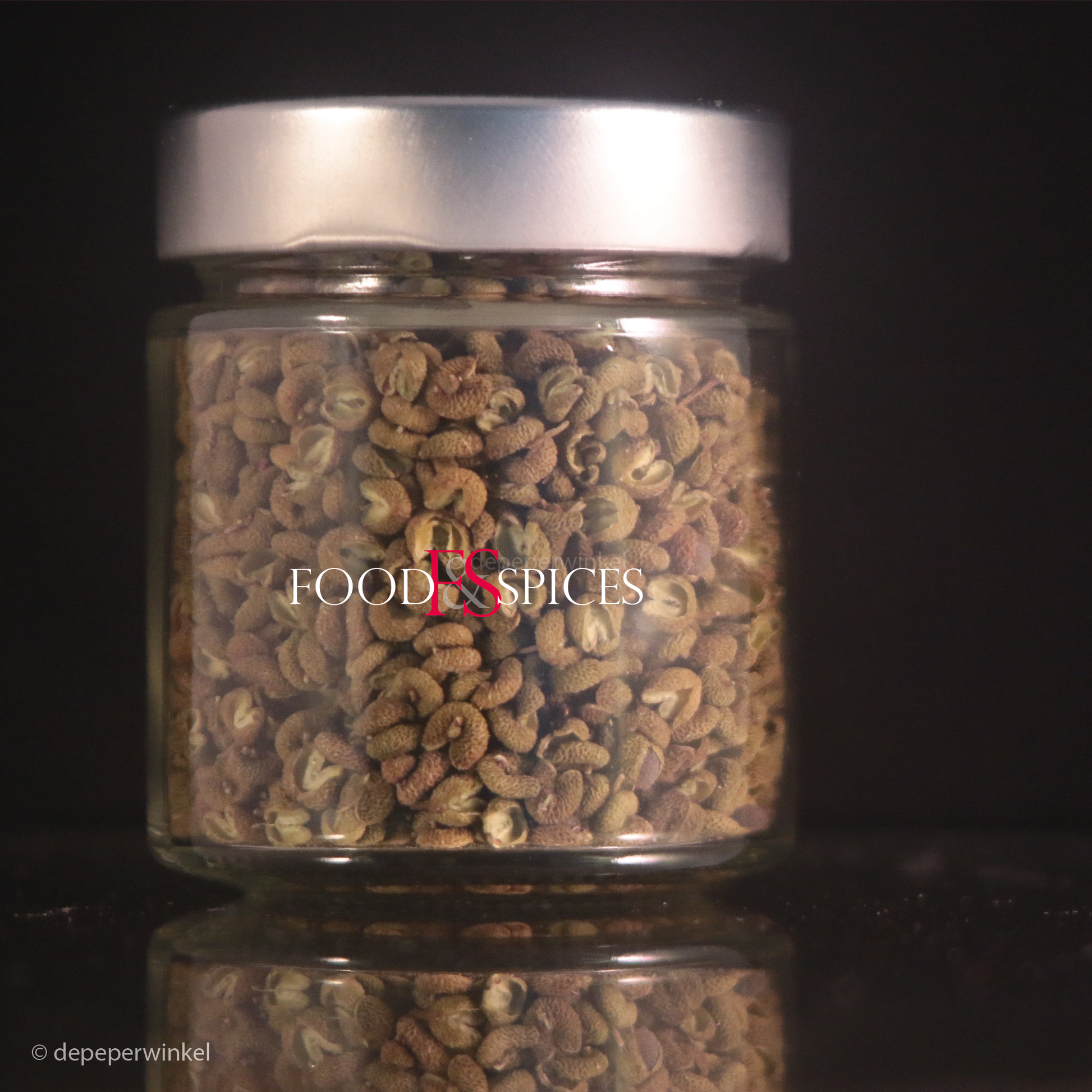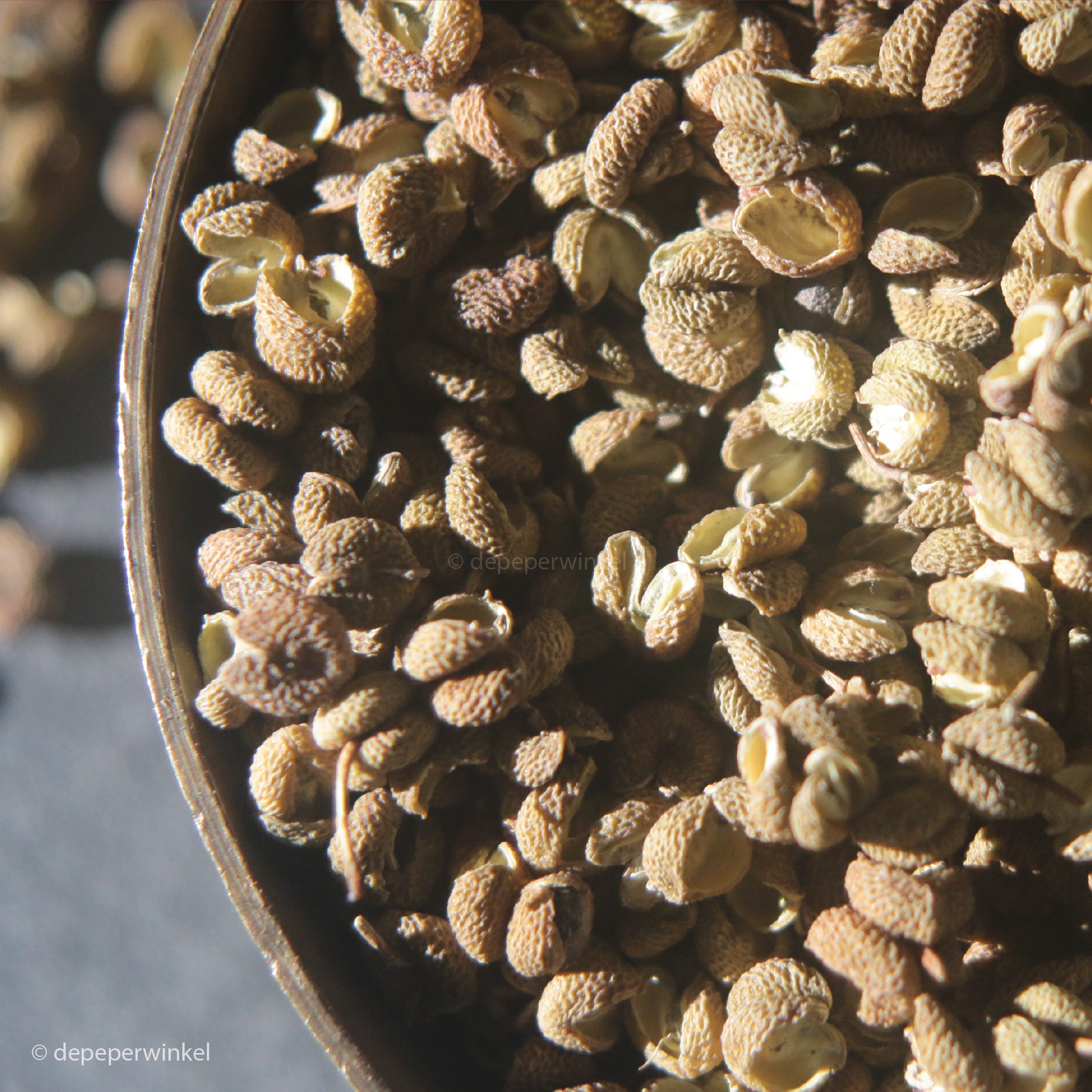depeperwinkel
Green sansho pepper - Sanshō-no-mi
Green sansho pepper - Sanshō-no-mi
Temporarily out of stock
Unable to load availability for pickup
Our sanshō or sansho pepper from Wakayama is undeniably one of the better sanshō's. To allow the subtle mint and citrus flavour to come into its own, the slightly bitter, oily seeds have been removed.
Sold out! No new supply from Wakayama to Europe is expected in the short term, neither of green nor red sansho. We hope to be able to source the sansho from elsewhere in Japan in the course of 2025. Fingers crossed!
The sanshō or Japanese pepper is related to the Chinese Szechuan pepper and the Nepalese timur, but unlike these two brothers or sisters from the Yellowwood genus (Zanthoxylum), the leaves, flowers and shoots of the sanshō tree are also eaten. Incidentally, sanshō means mountain pepper.
Sanshō pepper has been used as a spice for thousands of years, it is thought, although there is no conclusive evidence for this. It was called naruhajika during the Nara era in the eighth century, and used as a medicine to treat diarrhea. It would continue to be used primarily as a medicine for a long time. It was not until the Kamakura era (1185 to 1333 AD) that it was used as a spice again by the samurai, during hunting. Unagi, a dish of freshwater eel with sanshō pepper, dates from that time.
It is now a prominent spice, even one of the few spices in Japanese cuisine. The unripe green berries are called sanshō-no-mi. These are sharper and more aromatic than the red sanshō. The first green sanshō appear on the market from May, the red in October.
One of the first preparations with sanshō ever is described in the Okusa cookbook from the fifteenth century. An eel dish. Eel in Japan would always be prepared with sanshō or in extreme cases with shichimi tõgarashi (seven-spice powder).
In Japan, people eat the berries (fresh and dried), the leaves and the young shoots. This is not the case in most other Asian countries. The unripe green berries are very popular because of their taste palette and sharpness. The red berries are more expensive, but are not appreciated by many because of their more pronounced citrus taste as the green ones, which are called sanshō-no-mi.
In Japanese cuisine, spices are rarely used. Sanshō is almost always used. When a Japanese person uses 'our' black pepper, he is very selective. Almost all black pepper in Japanese cuisine comes from Sarawak, the Malaysian part of Borneo.
Our sanshō peppers are grown and come from Wakayama, the beating sanshō heart of Japan since the end of the 19th century. They are grown by the fourth generation of the family-owned Kaneichi, founded in 1880 by Yamamoto Katsunosuke.
The unique sharpness experience of sanshol
Characteristic of all Zanthoxylum peppers, and therefore also of sanshō, is the tingling sensation you experience on the tip of your tongue due to a substance in the pepper that sanshool hot, named after the Japanese spice. The pungency is caused by the amides in the peel of the fruit: α-, β-, γ- and δ-sanshool, α hidroxy sanshool and β-hidroxy sanshool. The numbing effect is mainly caused by γ sanshool and α hidroxy sanshool. The amount of α-hidroxy-sanshool in the berries can amount to (well over) 50 ‰ of the dry weight, of γ sanshool around 5‰.
Ripe berries are sharper than unripe ones.
The tingling sensation is accompanied by a slight numbness, jokingly compared to tasting a 9 volt battery.A single berry is enough to experience that! This somatosensation, tingling by touch, has been used for centuries as an anaesthetic in traditional medicine in Asia. The effect is very complex and the subject of extensive studies. Hydroxy-α-sanshol in particular is said to cause the tingling, and there are certain parallels with the sharpness experience of capsaicin, the sharp substance in chili pepper, but also with menthol and mustard oil.
Smell and taste
Sanshō is a member of the citrus family, which you experience in a scent that is a mixture of grapefruit, lemon, sereh and rosewood. In between you taste and smell - very lightly - mint. Characteristic for all Zanthoxylum peppers, and therefore also for sanshō is the tingling that you experience on the tip of your tongue due to a substance in the pepper called sanshool, named after the Japanese spice.
- linalyl acetate, responsible for a pleasant citrus, bergamot and lavender scent,
- limonene, the scent of lemon peel,
- citral, the scent of grapefruit,
- geraniol, rose scent,
- geranyl acetate, lavender fragrance.
- β-pinene, pine resin, and
- linalool, responsible for the scents of rosewood and coriander
A ripe berry contains considerably more linalool, geraniol and geranyl acetate than a green berry. The aromas develop during ripening,
Combinations
Sanshō pepper combines well with citrus (kafir leaf, yuzu or lemongrass), coconut, coriander and curry leaves, miso and soy sauce.
Usage
In addition to dishes with freshwater eel - don't forget how depleted eel stocks are - sanshō is delicious with white and red meat, duck, fish and shellfish, squid and desserts, especially those with chocolate. Sanshō is a key ingredient in Shichimi Togarashi, Japan's seven-spice spice, and is used in Japanese noodle and miso dishes.
Features:
- 100% dried fruits of the Zanthoxylum piperitum
- premium quality: max 5% seed
- origin: wakayama, japan
Assortment
- available in glass, stand-up pouch and test tube
- glass jar contains 30 grams
- stand-up pouches with a capacity of up to 30 to 300 grams
- available in 10 ml test tube
- larger quantities on request
Gift wrapping
- The jar is available in a tasteful gift packaging, consisting of a cube box filled with black tissue paper
- For an overview of our gift packaging, please refer to the gift packaging section
General advice
- sanshō pepper is the Szechuan pepper for refined cuisine, and can be used both cold and hot
- use sanshō sparingly, and add it after or at the end of cooking
- Give the sanshō berries time to absorb moisture so that the flavour can develop optimally.
Save:
- save your sansho pepper in closed packaging
- preferably store in a dark, dry and cool place
- best before (n/a)
Stock item
Due to serious delivery problems our stock is (almost) exhausted. We are currently waiting for positive news from Japan.If you would like to be kept informed, please let us know.
Share







